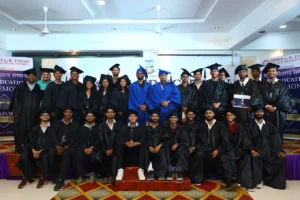Introduction: The Next Step in Immersive Sound Experiences
Autonomous Sensory Meridian Response (ASMR) content has rapidly evolved from whispered YouTube videos to a sophisticated medium of sensory storytelling. Among the subgenres gaining attention is EroASMR, which focuses on emotionally intimate audio experiences designed to evoke comfort, calmness, or closeness.
As audio technology continues to advance, a new innovation is on the horizon: haptic feedback. By simulating the sense of touch through wearable devices, haptic technology could take EroASMR—and immersive content more broadly—to a whole new level. But how realistic is this future, and what might it look like?
What Is Haptic Feedback?
Haptic feedback refers to the use of vibration or touch simulation to replicate real-world physical sensations. While the most common example is the vibration in a smartphone or gaming controller, modern haptic systems have become much more advanced. They can mimic:
-
Gentle brushing or tapping
-
Pressure and warmth
-
Rhythmic pulses tied to audio cues
-
Simulated motion or spatial touch
Used widely in virtual reality, therapy, and gaming, haptics may soon find a natural home in ASMR and other audio-immersive experiences.
How Haptics Could Enhance ASMR Content
While ASMR already provides mental and auditory triggers, adding a touch-based component could dramatically increase its immersive power. Here’s how haptics could enhance such experiences:
1. Deeper Sensory Immersion
Imagine feeling a subtle vibration on your shoulder as a voice whispers from your right ear. Spatial audio paired with directional haptics could simulate an incredibly lifelike sense of presence—helping listeners feel as if they’re truly interacting with the audio.
2. Emotional Engagement
Touch is strongly associated with emotional comfort. Incorporating gentle pulses or calming sensations could deepen the emotional connection with the listener and enhance feelings of safety or relaxation.
3. Customizable Experiences
Future haptic-enabled content could allow users to control:
-
Intensity of touch feedback
-
Type of tactile sensation (light tapping, rhythmic pulse)
-
Specific body areas for feedback
This level of personalization could transform passive listening into interactive self-care.
Devices That Could Power Haptic ASMR
Several types of devices currently on the market or in development may be repurposed for immersive ASMR:
| Device Type | Functionality |
|---|---|
| Haptic Vests (e.g., bHaptics) | Delivers sensation to the upper body in sync with audio |
| Wearable Gloves | Simulate hand gestures or taps |
| Haptic Patches or Bands | Provide focused feedback in areas like wrists or shoulders |
| VR Headsets with Haptics | Integrate audio, visuals, and touch into one immersive space |
These devices are already used in gaming and therapy—and are well-positioned to expand into audio wellness and mindfulness content.
ASMR in the VR Era: A Multi-Sensory Experience
The full potential of haptic ASMR may be realized when paired with virtual reality. In a VR setting, listeners could:
-
Explore calming environments
-
Interact with soothing audio characters or guides
-
Receive responsive touch feedback aligned with the scenario
Combining visual, audio, and tactile immersion has the potential to elevate mindfulness, meditation, and comfort-focused experiences in ways not previously possible.
Potential Use Cases and Audiences
1. Emotional Well-Being
Haptic ASMR could support users dealing with stress, isolation, or emotional fatigue. Simulated touch might offer a non-invasive method of emotional support, particularly for those who benefit from calm, guided presence.
2. Sensory Relaxation and Mindfulness
The inclusion of tactile elements may deepen states of relaxation, allowing users to physically feel the effects of calming audio or guided breathing exercises.
3. Accessible Digital Experiences
For individuals who have limited access to physical touch or mobility, haptic-enhanced ASMR provides an accessible and customizable tool for emotional care.
Challenges and Considerations
1. Cost and Accessibility
Many haptic devices are still expensive and not widely available. Broader adoption may depend on more affordable solutions and integration into mobile platforms.
2. Ethical Design
As with all emerging technology, ethical use is critical. Developers and content creators will need to consider:
-
Clear labeling of content
-
Consent and safety protocols
-
Age-appropriate access
3. Tech Compatibility
Widespread adoption also depends on integration with smartphones, VR headsets, and audio platforms—requiring software and hardware collaboration.
Is Haptic ASMR Coming Soon?
While fully immersive, touch-enabled ASMR isn’t mainstream yet, we’re seeing the early stages. Developers are working on mobile-compatible haptics, ASMR-ready VR applications, and real-time feedback systems. As technology improves and prices come down, we may see the first waves of haptic-enhanced audio content by 2026 or earlier.
Conclusion: A More Tangible Future for ASMR
EroASMR and similar intimate audio genres are becoming increasingly innovative in their use of sound, emotion, and technology. The addition of haptic feedback could provide users with a multi-sensory experience that deepens connection, supports emotional well-being, and redefines how we engage with audio content.
As long as this technology is developed with inclusivity, ethics, and emotional care in mind, it may unlock a meaningful new avenue for human connection in the digital world.
FAQs
Q1: Is haptic feedback safe to use with wellness content?
Yes, haptic technology is generally safe when used as intended and offers unique benefits for emotional and sensory wellness.
Q2: Will I need VR equipment to experience haptic ASMR?
Not necessarily. Many upcoming wearable haptic devices are designed to work with mobile apps or desktop content.
Q3: Is this technology available now?
Some early haptic devices exist, but widespread integration into ASMR content is still in development.


